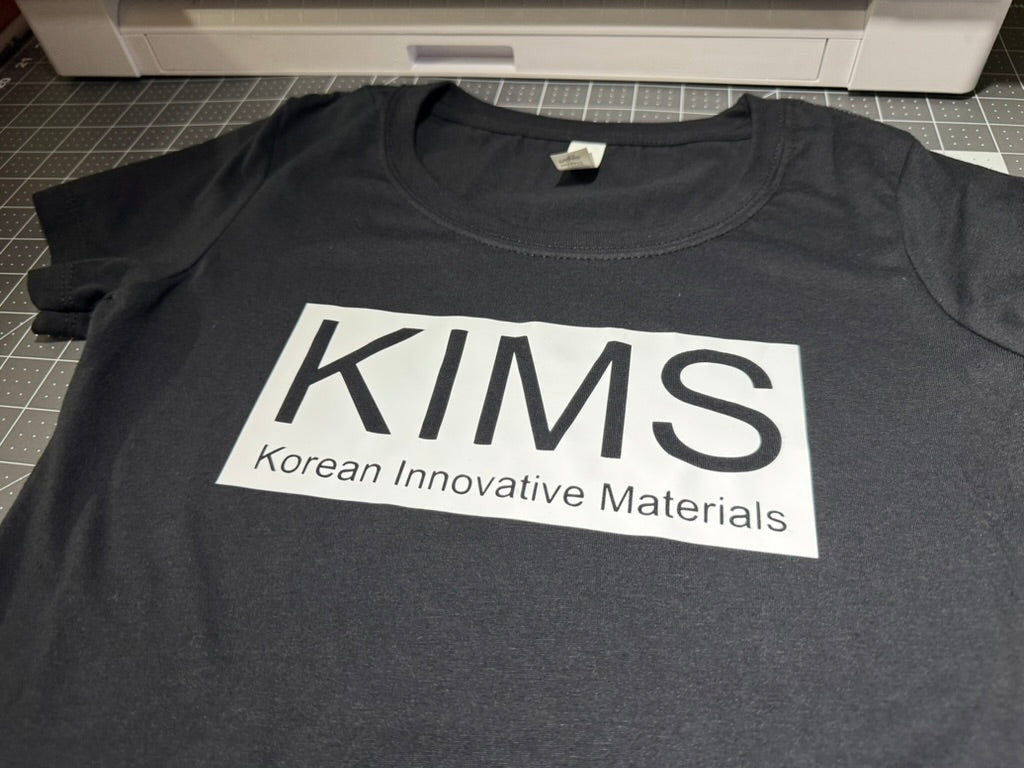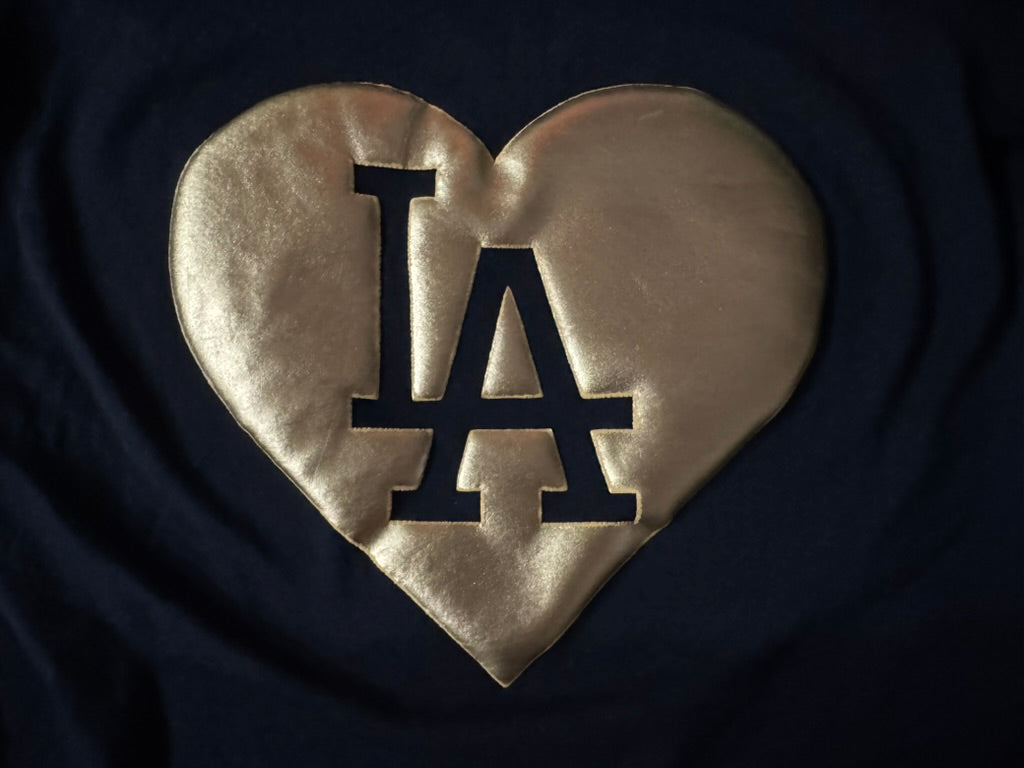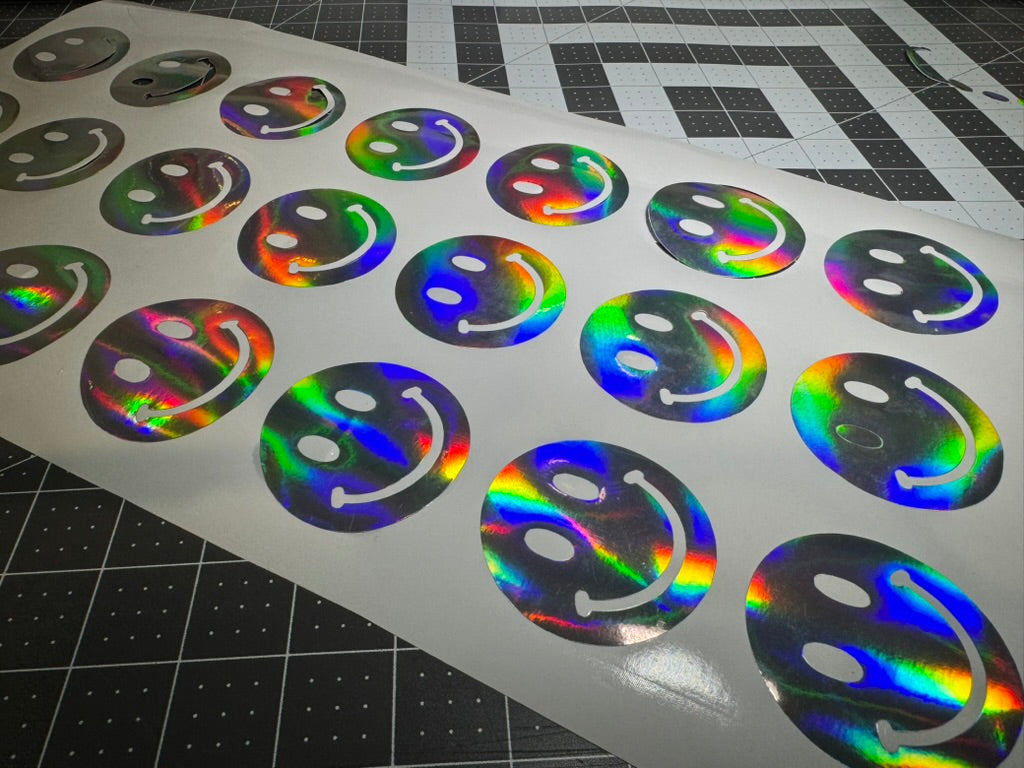Heat transfer vinyl, often shortened to HTV, is used to create custom designs on fabric and other surfaces. It is applied using heat and pressure, usually with a heat press or household iron.
There are many different types of HTV, but not all are made the same. Some are designed for basic use, while others are made for professional-level performance.
High quality heat transfer vinyl is designed with more durable materials, refined adhesives, and better cutting properties. This article explains what makes HTV high quality and how it differs from standard grades.
What Is High Quality Heat Transfer Vinyl
Heat transfer vinyl is a material used to apply designs onto textiles. It comes in rolls or sheets and consists of several layers that work together during the transfer process.
High quality heat transfer vinyl is manufactured with strict quality controls and premium materials. Most professional grade heat transfer vinyl uses polyurethane (PU) as the base material because it's thin, stretchy, and feels soft against the skin after application.
Every piece of HTV includes three main components:
-
Carrier Sheet: The clear plastic top layer that holds your cut design in place and allows for accurate positioning on the fabric
-
Colored Vinyl Layer: The actual design part that will transfer to your garment, made from materials like polyurethane for better cutting precision
-
Adhesive Layer: The heat-activated glue that bonds the vinyl to the fabric when heat and pressure are applied
Premium heat transfer vinyl maintains consistent thickness throughout the material, which helps it cut more predictably. The adhesive is evenly distributed, creating stronger bonds that last through multiple wash cycles without peeling or cracking.
When working with detailed designs, high quality HTV makes a significant difference. It cuts cleanly without tearing, weeds easily without stretching, and applies smoothly without bubbling or lifting at the edges.
Why Quality Matters For Professional And DIY Projects
The quality of vinyl directly affects how your final project turns out. Better vinyl leads to cleaner cuts, easier weeding, and longer-lasting designs. Lower quality materials often result in frustration during the creation process and disappointment after washing.
This comparison shows why quality makes a difference:
|
Feature |
High-Quality HTV |
Low-Quality HTV |
|---|---|---|
|
Wash Durability |
50+ washes |
10-15 washes |
|
Color Retention |
Minimal fading |
Noticeable fading |
|
Weeding Experience |
Clean cuts, less tearing |
Frequent tearing, distortion |
|
Application Success |
Consistent results |
Unpredictable bonding |
|
Finished Feel |
Soft, flexible |
Stiff, may crack |
Quality matters most in these situations:
-
Detailed Designs: Fine lines and small text require vinyl that holds its shape during cutting and weeding
-
Commercial Products: Items sold to customers need to withstand regular use and washing
-
Performance Wear: Athletic gear needs vinyl that stretches and recovers without cracking
For businesses, high quality vinyl improves efficiency. When the best vinyl for t-shirts is used, production moves faster with fewer errors. This means less wasted material, reduced labor time, and happier customers.
Popular Types And Finishes Of Premium HTV
PU Vinyl
Polyurethane (PU) vinyl is considered the gold standard for heat transfer projects. It's thin (typically 80-100 microns), stretchy, and has a soft feel after application.
PU vinyl cuts precisely, even with intricate designs. The material peels cleanly from the carrier sheet during weeding without stretching or tearing. After application, it feels almost like it's part of the fabric rather than sitting on top.
This vinyl works well on cotton, polyester, blends, and even some performance fabrics. It can be applied at lower temperatures (around 280-305°F), which helps protect delicate fabrics from heat damage.
3D Puff Vinyl
Puff vinyl creates a raised, dimensional effect when heat is applied. The vinyl expands to about three times its original thickness, creating a soft, cushioned texture.
Unlike regular vinyl, puff HTV requires specific application techniques:
-
Higher pressure during pressing
-
Shorter press time (usually 8-10 seconds)
-
Space for expansion during the heating process
This specialty vinyl works best for larger designs, numbers, and bold text. It's popular for sports jerseys, team apparel, and designs where you want elements to stand out physically from the garment.
Reflective Vinyl
Reflective heat transfer vinyl contains tiny glass beads or prismatic materials that bounce light back to its source. In normal lighting, it appears silver or gray, but when light hits it directly (like from car headlights), it glows brightly.
Cutting reflective vinyl requires adjustments to your normal process:
-
Use a sharp blade
-
Cut at slower speeds
-
Apply more cutting pressure
-
Test cuts are essential
This material is perfect for safety apparel, running gear, cycling clothes, or any design that benefits from visibility in low light conditions. It adheres well to most fabrics but works best on smooth, stable materials.
Holographic Vinyl
Holographic vinyl creates rainbow-like color shifts when light hits it from different angles. The surface has a metallic appearance with iridescent patterns that change as the garment moves.
This eye-catching material adds visual interest to designs without adding bulk. It cuts cleanly but requires more precise settings than standard vinyl due to its specialized structure.
Holographic HTV works best for decorative elements and accent pieces. It's popular for fashion items, dance costumes, and projects where visual impact matters more than extreme durability.
Glitter Vinyl
Glitter heat transfer vinyl contains reflective particles embedded throughout the material. Unlike loose glitter, these particles are sealed within the vinyl, so they don't shed or fall off over time.
Working with glitter vinyl requires some adjustments:
-
Increase cutting pressure
-
Use slower cutting speeds
-
Weed carefully to avoid tearing
-
Apply firm, even pressure during heat application
This specialty finish is perfect for dance wear, spirit shirts, holiday designs, and children's clothing. The texture and sparkle add dimension to designs that flat vinyl can't achieve.
How To Choose The Right HTV For Your Needs
Brand Comparisons
When selecting heat transfer vinyl sheets, comparing brands helps identify which offers the features you need. Each brand has different strengths and specialties.
|
Brand |
Best Features |
Ideal Uses |
Price Range |
|---|---|---|---|
|
Siser |
Wide color selection, consistent quality |
All-purpose projects, layering |
Mid-range |
|
Cricut |
User-friendly, works with Cricut Design Space |
Hobby projects, beginners |
Premium |
|
Stahls' |
Commercial durability, specialty finishes |
Business use, team apparel |
Premium |
|
ThermoFlex |
Excellent stretch, thin profile |
Performance wear, detailed designs |
Mid-range |
|
KIMS Direct |
Superior weeding, fast shipping |
Production environments, bulk projects |
Value |
When comparing brands, consider these factors:
-
Temperature requirements: Lower temps protect delicate fabrics
-
Carrier sheet quality: Clearer carriers make positioning easier
-
Color consistency: Reliable colors between batches matter for repeat orders
-
Technical support: Some brands offer better resources and customer service
Cost Versus Long Term Value
The initial price of vinyl doesn't tell the whole story. When evaluating cost, consider these factors that affect the true value:
-
Material waste: Cheaper vinyl often leads to more failed cuts and wasted material
-
Production time: Vinyl that weeds easily saves significant labor time
-
Customer satisfaction: Durable vinyl leads to fewer complaints and returns
-
Equipment maintenance: Lower quality vinyl can dull blades faster
For example, if a $0.80/sq ft vinyl requires redoing 20% of projects due to cutting or application issues, it actually costs more than a $1.00/sq ft vinyl with a 98% success rate.
For businesses, time is money. Vinyl that cuts cleanly and weeds quickly can increase production capacity without adding staff or equipment.
Specialty Finish Considerations
Different projects require different vinyl finishes. Choosing the right specialty vinyl depends on:
-
Project purpose: Is it decorative or functional?
-
Wear conditions: Will it face harsh washing or outdoor exposure?
-
Design complexity: Some finishes handle detail better than others
-
Fabric type: Stretchy fabrics need flexible vinyl
Custom heat transfer vinyl projects often combine different vinyl types. For example, a sports jersey might use reflective vinyl for numbers and standard vinyl for the team logo.
When selecting specialty finishes, consider how the garment will be used. Athletic wear needs vinyl that stretches and recovers, while fashion items might prioritize visual impact over extreme durability.
Pro Tips For Cutting Weeding And Heat Pressing
1. Optimize Your Cutting Settings
Getting your cutting settings right makes a huge difference in the quality of your final design. Each vinyl type and cutting machine combination has ideal settings.
For Cricut machines using standard vinyl:
-
Pressure: Medium to firm
-
Speed: Normal to slow
-
Blade: Fine point, new or nearly new
For Silhouette machines:
-
Force: 8-12 (depending on vinyl thickness)
-
Speed: 5-7
-
Blade depth: 2-3
Always make a small test cut before cutting your entire design. A good test cut should:
-
Cut completely through the vinyl layer
-
Not cut through the carrier sheet
-
Weed easily without tearing
If your cuts aren't perfect, adjust one setting at a time until you find the right combination for your specific vinyl and machine.
2. Use Proper Weeding Techniques
Weeding is removing the excess vinyl from around your design. This process can be simple or challenging depending on your design complexity and the vinyl quality.
For easier weeding:
-
Work in good lighting – a light pad can help see cut lines
-
Start from one corner and work methodically
-
Use the right tools – fine-point tweezers for small details
-
Weed inside elements first, then remove the outer excess
When weeding intricate designs:
-
Take your time – rushing leads to mistakes
-
Hold the carrier sheet flat against your work surface
-
Use a weeding tool with a hook end for picking up small pieces
-
Consider using weeding boxes around complex areas
The right vinyl makes weeding much easier. High quality vinyl cuts cleanly and separates from itself without stretching or tearing during the weeding process.
3. Calibrate Heat And Pressure Correctly
Heat and pressure settings vary by vinyl type. Using the correct settings ensures proper adhesion without damaging the vinyl or fabric.
General guidelines for most PU vinyl:
-
Temperature: 305-315°F (150-160°C)
-
Time: 10-15 seconds
-
Pressure: Medium
For specialty vinyl like glitter or puff:
-
Check manufacturer instructions – these often need higher temps
-
Adjust pressure based on vinyl thickness
-
Modify pressing time as recommended
Common heat application mistakes include:
-
Temperature too low: Results in poor adhesion and peeling
-
Temperature too high: Can damage vinyl or fabric
-
Uneven pressure: Causes parts of the design to lift
-
Incorrect timing: Either doesn't activate adhesive or overheats it
Using a quality heat press provides the most consistent results. If using an iron, press firmly and move slowly to ensure even heat distribution.
4. Apply Consistent Timing For Best Results
Timing matters in heat transfer application. Proper timing ensures the adhesive activates fully without overheating the vinyl.
The science behind proper timing:
-
Heat needs time to penetrate through the vinyl to the adhesive layer
-
The adhesive needs to reach activation temperature throughout
-
Different vinyl thicknesses require different timing
Pre-heating the garment for 2-3 seconds helps by:
-
Removing moisture from the fabric
-
Flattening the application area
-
Warming the surface for better adhesion
After pressing, follow the manufacturer's instructions for peeling the carrier sheet:
-
Hot peel: Remove immediately while still hot
-
Warm peel: Wait 5-10 seconds until warm
-
Cold peel: Wait until completely cool before removing
Vinyl heat transfer paper (the carrier sheet) should be removed at the right time to ensure the design stays on the garment and not on the carrier.
Troubleshooting Common Application Issues
Peeling Edges
When vinyl edges lift from the fabric, it's usually caused by one of these issues:
-
Heat problems: Temperature too low or uneven across the press
-
Pressure issues: Not enough pressure or uneven pressure
-
Material mismatch: Using vinyl not designed for your fabric type
To fix peeling on already-applied designs:
-
Cover the design with parchment paper or a teflon sheet
-
Re-press at the recommended temperature for 5-10 seconds
-
Allow to cool and check adhesion
For nylon or water-resistant fabrics, use specialty vinyl designed specifically for these materials. Regular vinyl won't adhere properly to these surfaces.
Cracking Or Fading
High quality vinyl resists cracking and fading much better than budget options. These issues typically appear after washing or extended wear.
To prevent cracking and fading:
-
Wash garments inside-out in cold water
-
Avoid bleach and harsh detergents
-
Dry on low heat or air dry
-
Iron from the reverse side if needed
Quality vinyl maintains its flexibility and color intensity through many wash cycles. The vinyl's formulation includes UV stabilizers and plasticizers that help it remain flexible and vibrant over time.
For maximum durability, follow the care instructions for both the vinyl and the garment. Even the best vinyl can be damaged by improper care.
Uneven Adherence
When parts of your design adhere well while others lift or bubble, several factors may be responsible:
-
Uneven heat across your press surface
-
Fabric texture creating high and low spots
-
Seams or features creating different pressure zones
Solutions for different fabric types:
-
For textured fabrics: Use a teflon pillow to create even pressure
-
For thin fabrics: Use light pressure to avoid pressing marks
-
For thick fabrics: Increase press time slightly to allow heat penetration
Heat press maintenance affects application quality. Clean your press regularly and check for cold spots that might cause uneven heating.
When working with heat transfer vinyl rolls, store them properly to prevent curling or stretching that could affect application. Flat, even vinyl applies more consistently than vinyl with waves or curves.
Empower Your Projects With Proven Materials
High quality heat transfer vinyl transforms ordinary fabric into custom-designed apparel that lasts. The right materials make the difference between professional results and amateur outcomes.
Premium vinyl cuts precisely, weeds easily, and applies smoothly. These qualities save time and reduce frustration during the creation process. After application, high quality vinyl maintains its appearance through repeated washing and wearing.
For reliable results, choose vinyl that matches your project requirements. Consider the fabric type, design complexity, and intended use when selecting materials. Testing new vinyl types on sample fabric helps identify the best option before committing to a full project.
KIMS Direct offers heat transfer vinyl with exceptional cutting precision and washing durability. Their materials feature consistent thickness and reliable adhesives that create strong bonds with fabric. Shop our vinyl rolls and heat transfer products at kimsdirect.com/collections/all to find options for every project type.
Frequently Asked Questions About High Quality Heat Transfer Vinyl
What makes heat transfer vinyl "high quality" compared to standard options?
High quality heat transfer vinyl uses premium polyurethane materials, consistent thickness, and stronger adhesives that create longer-lasting bonds with fabric. The manufacturing process includes strict quality controls to ensure reliable performance.
How many wash cycles can high quality heat transfer vinyl withstand?
Premium heat transfer vinyl typically withstands 50+ wash cycles without peeling or significant fading when applied correctly and cared for properly. Lower quality vinyl often begins to deteriorate after 10-15 washes.
Which heat transfer vinyl brand offers the best balance of quality and value?
The best brand depends on your specific needs and equipment. Siser EasyWeed, Stahls', and KIMS Direct all offer excellent quality-to-price ratios with different strengths in color selection, cutting precision, and durability.
Can high quality heat transfer vinyl be applied to fabrics other than cotton?
Yes, high quality HTV works well on polyester, poly-cotton blends, rayon, and many performance fabrics. Some specialty vinyls are designed specifically for challenging fabrics like nylon or water-resistant materials.
What temperature settings work best for premium heat transfer vinyl?
Most premium vinyl applies best between 280-320°F (140-160°C) for 10-15 seconds with medium pressure. Always check the manufacturer's recommendations, as specialty finishes may require different settings.
How does high quality heat transfer vinyl perform on stretchy athletic fabrics?
Premium polyurethane vinyl stretches with the fabric and recovers without cracking. For highly elastic fabrics like spandex or compression wear, choose vinyl specifically designed for stretch applications.
What is the shelf life of unopened high quality heat transfer vinyl?
When stored properly in a cool, dry place away from direct sunlight, unopened premium vinyl typically remains usable for 2-3 years. Proper storage prevents adhesive degradation and maintains the vinyl's cutting and application properties.







